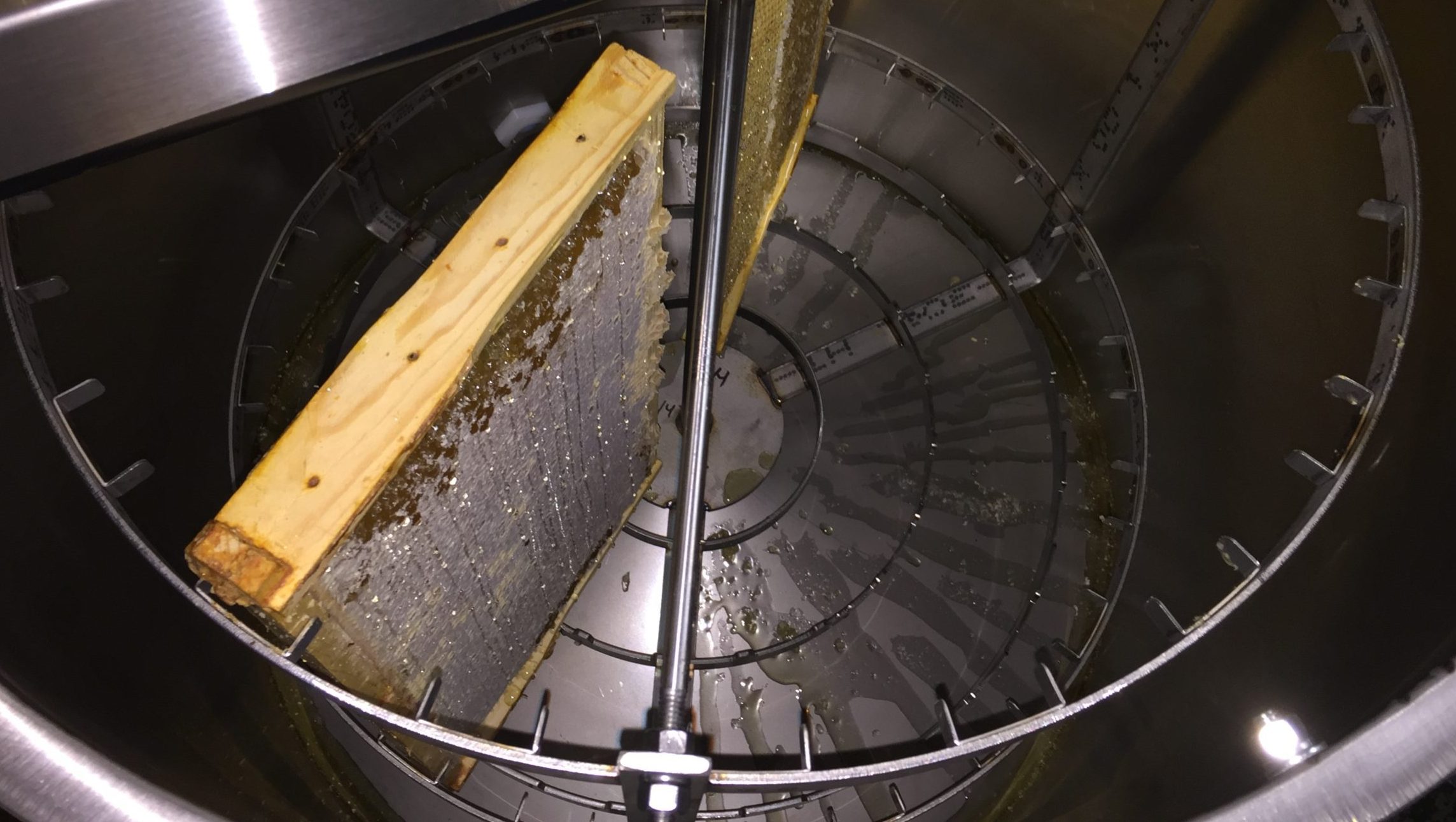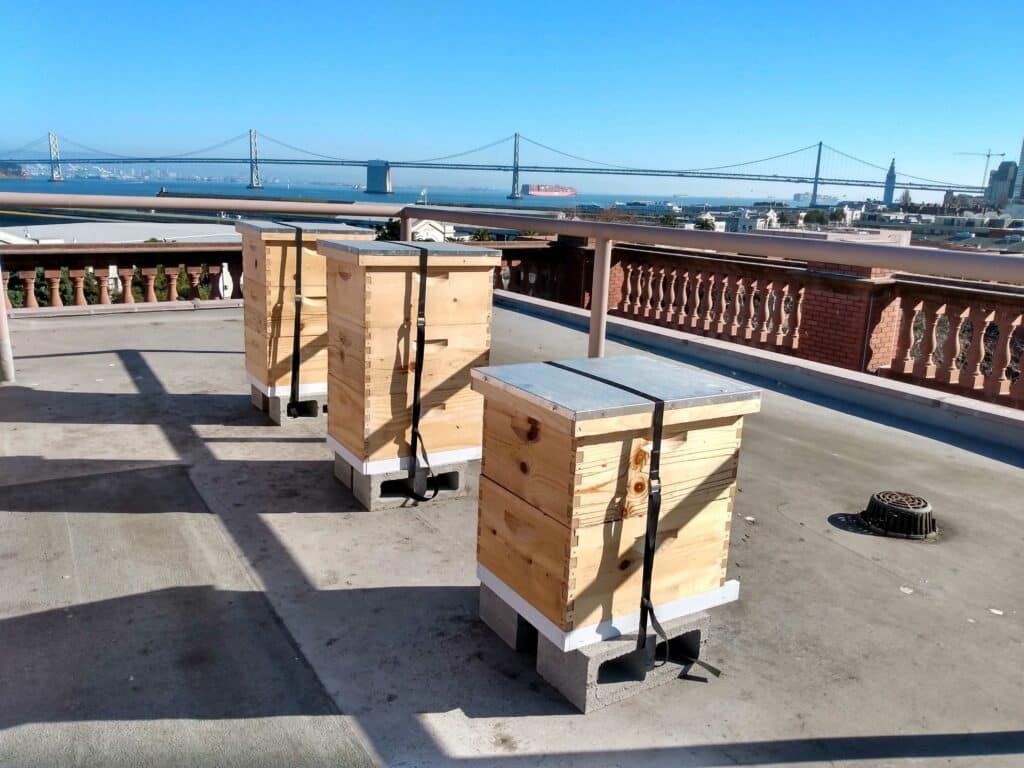The Flow Hive could usher in a new era of beekeeping.
Billed as the “no mess, no fuss” approach to the laborious task of harvesting honey, the Flow Hive allows beekeepers to collect their harvest without disturbing the hive. The secret is its innovative frame design: each hive comes with prefabricated plastic frames that the bees complete with their wax and fill with honey. Turn an exterior crank and the frame splits open, creating channels within the comb. Honey then flows out through a spigot, allowing easy collection.
Australian inventors Cedar and Stuart Anderson debuted their wonder from Down Under in a YouTube video last year, imploring the public to donate to their crowdfunded campaign on Indiegogo. Their goal was $70,000; eight weeks later, they had surpassed $12 million.
And who wouldn’t throw money at such a great invention? Harvesting honey has historically been a hassle. Frustrations are somewhat eased with expensive specialty equipment. The Flow Hive would further simplify the process to just a twist of the handle. But not everyone is on board – many members of the wider beekeeping community are furious.
Opposition
“At first glance, I too thought Flow Hive was a genius invention that honors the bees, but after looking under the proverbial lid, I’ve concluded that the device reduces nature’s miracle into a beer keg,” rails Maryam Heinan, writer for Honey Colony.
“The foolish beekeeper hides behind technology…exploits them to the edge of starvation,” adds Jonathan Powell of The Bee’s Wing.
Most of the outcry springs from the apparent oversimplification of beekeeping. Indeed, the necessary tasks that occupy a majority of a beekeeper’s time – such as checking for disease, monitoring honey and pollen stores, and ensuring the health of the brood and queen – were notably absent from the original Flow Hive video.
Beekeepers fear that inspired but inexperienced people will assume they can install a colony and watch the honey flow. In reality, harvests happen one or two times a year, or even not at all. Bees produce as much honey as they need to overwinter; responsible beekeepers only harvest the surplus. The frightening ease of harvesting could easily lead to overexploitation, stealing honey that the bees need to survive. The only way to gauge an appropriate yield is to open the hive.
Careful Harvesting and Organization
Some may say, “fear not, the Flow Hive comes equipped with viewing windows on the front and sides of the boxes that will eliminate the need for disruptive hive openings.” However, to the inexperienced beekeeper, this design fails to account for basic hive organization. Many frames have only a fringe of honey, with the majority dedicated to brood, pollen, or empty space. Therefore, a frame will look full from the side, but after turning the spigot, the unfortunate novice may reap a bountiful harvest of liquefied brood.
Brood can be kept out of the Flow Frames with a queen excluder, which prevents the queen from entering boxes and laying eggs. This means that your Flow Hive setup should be limited to the top box or boxes. The Flow Hive only comes with two boxes, but an unrestricted colony could easily use most of this space for brood. Many beekeepers tend to harvest surplus honey from a third box, but a beginning beekeeper might not be aware of this.
Cost and Alternatives
Another objection to the Flow Hive is its cost – $699 for a full setup. Ideally, the Flow Hive is touted to replace costly harvesting equipment, defined here as a wax uncapper; a centrifuge; and a collection bucket with a lid, gate, and filter. Realistically, an equivalent hive setup and some basic harvesting equipment can be purchased for a slightly lower price than the Flow Hive. However, this doesn’t allow for the same ease of use, and would be admittedly more laborious and messy.
Commercial operations and even sideline beekeepers will need to spend much more money on higher-grade, automated harvesting equipment to meet their needs. Though the initial cost of this equipment scales with the size of the operation, it is not a per-hive investment like the Flow Hive. Experienced beekeepers should be able to make a rough prediction of the volume of honey they’ll need to process, and plan accordingly.

Who should use the Flow Hive?
The Flow Hive may find a home in commercial honey farms and certain other groups. If, for example, the time saved and smaller mess outweighs the potential extra cost, some businesses may want to convert. Also, the viewing windows and simple harvesting technique would be excellent for educational programs. While experienced beekeepers would need to tend the hive, the design would allow amateurs to acquire some hands-on experience. People with back problems or with little time on their hands may also enjoy the Flow Hive’s simpler harvesting method.
Finally, the beekeeping community should refrain from ad hominem attacks on the Flow Hive’s creators. Inventor Cedar Anderson was swift to respond to the initial wave of criticism, and today the company’s website is plastered with links for combating bee diseases, Flow Hive maintenance videos, and a search bar for finding apiarist clubs in your community.
The Flow Hive may be costly, but the main threat is that newbies will misuse it and harm their bees. The only way to combat that is to reach out to new beekeepers and ensure they are well-informed about their bees’ needs. In other words, the Flow Hive only becomes the end of all animal husbandry if we let it.
And until the next innovation in hive design comes along, donning the suit and braving a several thousand stingers will remain an integral and necessary part of colony management.
Check out the official website for the Flow Hive, honeyflow.com to learn more.
You can visit honeycolony.com and beeswings.net to read the full comments from the Flow Hive critics quoted above.
Madeline Carpenter is a first-year beekeeper with The Best Bees Company. As a Northeastern University co-op, she works both in the field and with our partner non-profit company conducting research on honey bee health.






